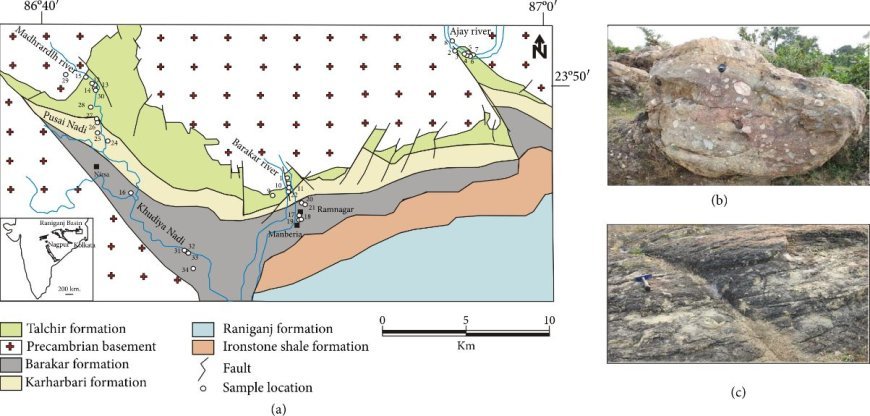GONDWANA ROCKS
Discover the Gondwana rocks and learn about their significance in understanding India's geological history.

Gondwana Rocks
- Gondwana denotes an expansive protocontinental landmass that was present in the late Paleozoic and early Mesozoic periods, around 600 million years ago.
- Geographically, it included the current continents of Africa, South America, Antarctica, Australia, and the Indian subcontinent.
- A comprehensive understanding of Gondwana rocks is crucial for recognising their fossils, climatic consequences, and economic significance.
1) Gondwana Rocks: An Analysis of Fossils
Importance of Fossils
- Present empirical data on prehistoric organisms that flourished throughout the Gondwana era.
- Facilitate scientists comprehension of evolutionary mechanisms and climatic fluctuations spanning millions of years.
Classification of Discovered Fossils
- Plant fossils encompass coal-forming plants such as ferns and cycads and provide evidence of the existence of abundant forests in the ancient climate of Gondwana.
- The category of animal fossils encompasses dinosaurs, reptiles, and early mammals. These fossils are crucial for the examination of biodiversity and ecological patterns throughout that period.
- Significant fossil sites include the Free State of South Africa and some regions of Australia, which have abundant fossil deposits that provide valuable insights into the biogeography of Gondwana.
2. Gondwana Climate
Ancient Climate Conditions
- Gondwana had a wide range of climates, including tropical rainforests and dry deserts.
- Climate variations in response to tectonic movements influenced ocean currents and land configurations.
- Paleoclimate Indicators: Fossilised foliage and coal deposits reflect a formerly verdant and fertile environment.
- Gypsum and salt deposits indicate arid and desert-like climates in certain areas.
- Impact on Biodiversity: Varied climatic conditions supported a wide range of living forms, therefore fostering variety in ecosystems.
- Alterations in climate resulted in widespread extinctions and the emergence of novel species.
3. Economic Significance of Gondwana Rocks Mineralogical Resources
- Coal has substantial reserves located in countries such as Australia and India, which are essential for the generation of electricity.
- Significant reserves of iron ore are located in South Africa and Brazil, which are crucial for the production of steel.
- The presence of fossil sites, national parks, and geological formations serves as a magnet for both visitors and scholars.
- Provides educational possibilities in the fields of geology, palaeontology, and earth sciences.
Land Use and Agriculture: Certain areas derive advantages from fertile soils generated by old geological processes. - The support of agricultural operations serves to bolster the economies of the countries concerned.
What's Your Reaction?

























